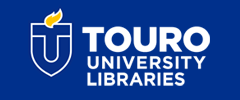NYMC Faculty Publications
Enhanced Fluorescence Diffuse Optical Tomography with Indocyanine Green-Encapsulating Liposomes Targeted to Receptors for Vascular Endothelial Growth Factor in Tumor Vasculature
Author Type(s)
Faculty
DOI
10.1117/1.JBO.18.12.126014
Journal Title
Journal of Biomedical Optics
First Page
126014
Last Page
126014
Document Type
Article
Publication Date
12-1-2013
Keywords
Animals, Cell Line, Tumor, Female, Fluorescent Dyes, Humans, Indocyanine Green, Liposomes, Mammary Neoplasms, Experimental, Mice, Mice, Inbred BALB C, Receptors, Vascular Endothelial Growth Factor, Tomography, Optical
Disciplines
Medicine and Health Sciences
Abstract
To develop an indocyanine green (ICG) tracer with slower clearance kinetics, we explored ICG-encapsulating liposomes (Lip) in three different formulations: untargeted (Lip/ICG), targeted to vascular endothelial growth factor (VEGF) receptors (scVEGF-Lip/ICG) by the receptor-binding moiety single-chain VEGF (scVEGF), or decorated with inactivated scVEGF (inactive-Lip/ICG) that does not bind to VEGF receptors. Experiments were conducted with tumor-bearing mice that were placed in a scattering medium with tumors located at imaging depths of either 1.5 or 2.0 cm. Near-infrared fluorescence diffuse optical tomography that provides depth-resolved spatial distributions of fluorescence in tumor was used for the detection of postinjection fluorescent signals. All liposome-based tracers, as well as free ICG, were injected intravenously into mice in the amounts corresponding to 5 nmol of ICG/mouse, and the kinetics of increase and decrease of fluorescent signals in tumors were monitored. A signal from free ICG reached maximum at 15-min postinjection and then rapidly declined with t1/2 of ~20 min. The signals from untargeted Lip/ICG and inactive-Lip/ICG also reached maximum at 15-min postinjection, however, declined somewhat slower than free ICG with t1/2 of ~30 min. By contrast, a signal from targeted scVEGF-Lip/ICG grew slower than that of all other tracers, reaching maximum at 30-min postinjection and declined much slower than that of other tracers with t1/2 of ~90 min, providing a more extended observation window. Higher scVEGF-Lip/ICG tumor accumulation was further confirmed by the analysis of fluorescence on cryosections of tumors that were harvested from animals at 400 min after injection with different tracers.
Recommended Citation
Zanganeh, S., Xu, Y., Hamby, C., Backer, M. V., Backer, J. M., & Zhu, Q. (2013). Enhanced Fluorescence Diffuse Optical Tomography with Indocyanine Green-Encapsulating Liposomes Targeted to Receptors for Vascular Endothelial Growth Factor in Tumor Vasculature. Journal of Biomedical Optics, 18 (12), 126014-126014. https://doi.org/10.1117/1.JBO.18.12.126014


